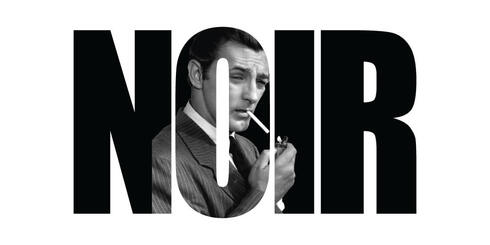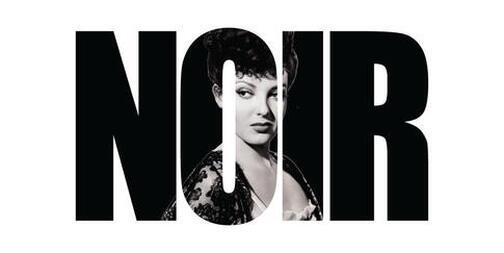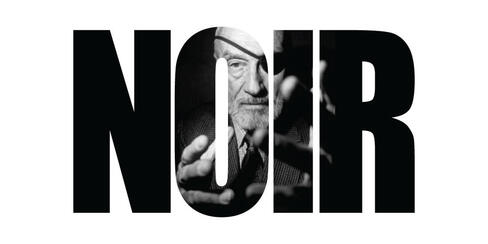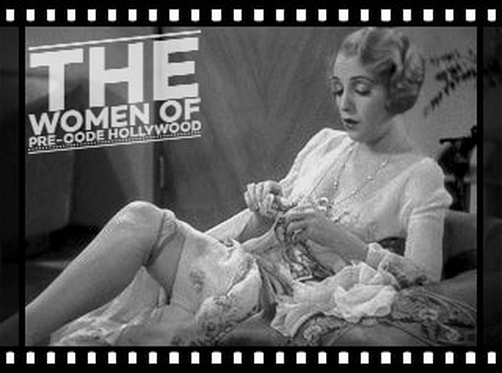CLAIRE TREVOR
AND FILM NOIR
Claire Trevor made significant contributions to the film noir genre, establishing herself as one of its most memorable actresses. She appeared in several classic film noirs and delivered powerful performances that embodied the essence of the genre. Here are some of her notable contributions:
"Murder, My Sweet" (1944): In this adaptation of Raymond Chandler's novel "Farewell, My Lovely," Trevor portrayed the femme fatale character Velma, opposite Dick Powell as the private detective Philip Marlowe. Her performance as the seductive and manipulative Velma perfectly captured the quintessential femme fatale archetype of film noir.
"Born to Kill" (1947): In this gritty and violent film noir, Trevor played Helen Brent, a woman who becomes entangled with a dangerous and ruthless murderer, played by Lawrence Tierney. Trevor's portrayal of a conflicted and morally ambiguous character added depth to the film and showcased her ability to embody complex and flawed women.
"Key Largo" (1948): Trevor starred alongside Humphrey Bogart and Lauren Bacall in this classic film noir directed by John Huston. She portrayed Gaye Dawn, a former nightclub singer with a dark past. Trevor's performance as a broken and vulnerable woman caught up in a tense hostage situation earned her critical acclaim and an Academy Award for Best Supporting Actress.
"Crack-Up" (1946): Trevor played the role of Terry Cordell, a woman who helps an art critic, portrayed by Pat O'Brien, unravel a mystery surrounding an accident. The film features elements of psychological suspense and showcases Trevor's ability to deliver nuanced performances within the noir framework.
"Raw Deal" (1948): In this film, Trevor played the character of Pat, a girlfriend who aids a convict in his escape. Trevor's portrayal of a loyal and sympathetic woman caught up in dangerous circumstances highlighted her versatility as an actress within the film noir genre.
Claire Trevor's performances in these films and others helped define the femme fatale archetype and demonstrated her ability to embody complex and intriguing characters. Her contribution to film noir remains significant, and her performances continue to be celebrated as some of the most memorable in the genre's history.
"Murder, My Sweet" (1944): In this adaptation of Raymond Chandler's novel "Farewell, My Lovely," Trevor portrayed the femme fatale character Velma, opposite Dick Powell as the private detective Philip Marlowe. Her performance as the seductive and manipulative Velma perfectly captured the quintessential femme fatale archetype of film noir.
"Born to Kill" (1947): In this gritty and violent film noir, Trevor played Helen Brent, a woman who becomes entangled with a dangerous and ruthless murderer, played by Lawrence Tierney. Trevor's portrayal of a conflicted and morally ambiguous character added depth to the film and showcased her ability to embody complex and flawed women.
"Key Largo" (1948): Trevor starred alongside Humphrey Bogart and Lauren Bacall in this classic film noir directed by John Huston. She portrayed Gaye Dawn, a former nightclub singer with a dark past. Trevor's performance as a broken and vulnerable woman caught up in a tense hostage situation earned her critical acclaim and an Academy Award for Best Supporting Actress.
"Crack-Up" (1946): Trevor played the role of Terry Cordell, a woman who helps an art critic, portrayed by Pat O'Brien, unravel a mystery surrounding an accident. The film features elements of psychological suspense and showcases Trevor's ability to deliver nuanced performances within the noir framework.
"Raw Deal" (1948): In this film, Trevor played the character of Pat, a girlfriend who aids a convict in his escape. Trevor's portrayal of a loyal and sympathetic woman caught up in dangerous circumstances highlighted her versatility as an actress within the film noir genre.
Claire Trevor's performances in these films and others helped define the femme fatale archetype and demonstrated her ability to embody complex and intriguing characters. Her contribution to film noir remains significant, and her performances continue to be celebrated as some of the most memorable in the genre's history.
AVAILABLE FILMS:
ALLEGHENY UPRISING (1939)
AMAZING DR. CLITTERHOUSE, THE (1938)
BEST OF THE BADMEN (1950)
BLACK SHEEP (1935)
BORDERLINE (1950)
BORN TO KILL (1947)
CROSSROADS (1942)
DANTE'S INFERNO (1935)
DEAD END (1937)
DESPERADOES, THE (1943)
HARD, FAST AND BEAUTIFUL (1951)
HOODLUM EMPIRE (1952)
I STOLE A MILLION (1939)
JOHNNY ANGEL (1946)
KEY LARGO (1948)
MURDER, MY SWEET (1944)
RAW DEAL (1948)
STAGECOACH (1939)
STRANGER WORE A GUN, THE (1953)
STREET OF CHANCE (1942)
VELVET TOUCH, THE (1948)
AMAZING DR. CLITTERHOUSE, THE (1938)
BEST OF THE BADMEN (1950)
BLACK SHEEP (1935)
BORDERLINE (1950)
BORN TO KILL (1947)
CROSSROADS (1942)
DANTE'S INFERNO (1935)
DEAD END (1937)
DESPERADOES, THE (1943)
HARD, FAST AND BEAUTIFUL (1951)
HOODLUM EMPIRE (1952)
I STOLE A MILLION (1939)
JOHNNY ANGEL (1946)
KEY LARGO (1948)
MURDER, MY SWEET (1944)
RAW DEAL (1948)
STAGECOACH (1939)
STRANGER WORE A GUN, THE (1953)
STREET OF CHANCE (1942)
VELVET TOUCH, THE (1948)
VIDEO TRIBUTE:
Claire Trevor
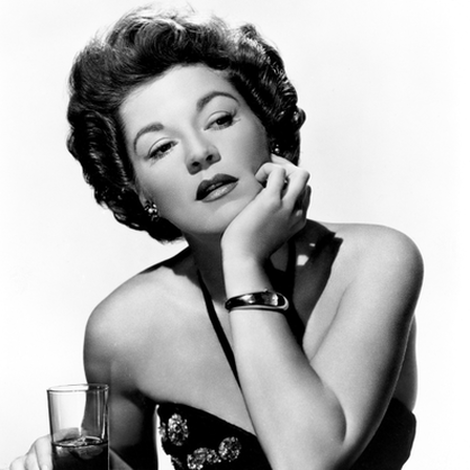
Claire Trevor was an American actress who was born on March 8, 1910, in Brooklyn, New York. She gained fame for her versatile performances in films and on stage, earning critical acclaim and several awards throughout her career. Here's a brief biography of Claire Trevor:
Early Life and Career: Claire Trevor was born as Claire Wemlinger to a prosperous Fifth Avenue family in New York City. She attended high school in Scarsdale, New York, and later enrolled at Columbia University, where she studied acting and drama. She began her acting career on stage, performing in various Broadway productions during the 1920s.
Film Career: Trevor made her film debut in 1933 with a small role in the film "Life in the Raw." She signed a contract with Warner Bros. soon after and appeared in several films throughout the 1930s and 1940s. Some of her notable early films include "Dead End" (1937) and "Stagecoach" (1939), where she received critical acclaim for her performances.
In the 1940s, Trevor established herself as a leading lady and appeared in a range of film genres, including crime dramas, film noir, and westerns. Her standout performances include "Murder, My Sweet" (1944), "Key Largo" (1948), and "Born to Kill" (1947), for which she received an Academy Award nomination for Best Supporting Actress.
Later Career: During the 1950s and 1960s, Trevor continued to work in film and television, showcasing her versatility in various roles. She appeared in films such as "The High and the Mighty" (1954) and "Marjorie Morningstar" (1958). She also had a successful television career, earning an Emmy Award nomination for her performance in "Dodsworth" (1956).
In the 1970s, Trevor transitioned to character roles and continued to receive recognition for her work. She appeared in films like "The Choirboys" (1977) and "Kiss Me Goodbye" (1982). Her performance in the film "Key West" (1993) earned her a Saturn Award for Best Supporting Actress.
Legacy and Honors: Claire Trevor's contributions to the film industry were recognized with numerous awards and honors. In 1960, she received a star on the Hollywood Walk of Fame. She was also inducted into the American Theatre Hall of Fame in 1972. In 1990, she received an Academy Honorary Award for her distinguished career in film.
Personal Life and Passing: Claire Trevor was married three times. Her first marriage was to Clark Andrews in 1938, which ended in divorce in 1943. She then married Cylos William Dunsmoore in 1943, but they divorced in 1947. Her final marriage was to Milton H. Bren in 1948, and they remained together until his death in 1979.
Claire Trevor passed away on April 8, 2000, at the age of 90, in Newport Beach, California. She left behind a lasting legacy as one of the most talented actresses of her time, known for her ability to portray complex characters with depth and authenticity.Claire Trevor was an American actress who was born on March 8, 1910, in Brooklyn, New York. She gained fame for her versatile performances in films and on stage, earning critical acclaim and several awards throughout her career.
Early Life and Career: Claire Trevor was born as Claire Wemlinger to a prosperous Fifth Avenue family in New York City. She attended high school in Scarsdale, New York, and later enrolled at Columbia University, where she studied acting and drama. She began her acting career on stage, performing in various Broadway productions during the 1920s.
Film Career: Trevor made her film debut in 1933 with a small role in the film "Life in the Raw." She signed a contract with Warner Bros. soon after and appeared in several films throughout the 1930s and 1940s. Some of her notable early films include "Dead End" (1937) and "Stagecoach" (1939), where she received critical acclaim for her performances.
In the 1940s, Trevor established herself as a leading lady and appeared in a range of film genres, including crime dramas, film noir, and westerns. Her standout performances include "Murder, My Sweet" (1944), "Key Largo" (1948), and "Born to Kill" (1947), for which she received an Academy Award nomination for Best Supporting Actress.
Later Career: During the 1950s and 1960s, Trevor continued to work in film and television, showcasing her versatility in various roles. She appeared in films such as "The High and the Mighty" (1954) and "Marjorie Morningstar" (1958). She also had a successful television career, earning an Emmy Award nomination for her performance in "Dodsworth" (1956).
In the 1970s, Trevor transitioned to character roles and continued to receive recognition for her work. She appeared in films like "The Choirboys" (1977) and "Kiss Me Goodbye" (1982). Her performance in the film "Key West" (1993) earned her a Saturn Award for Best Supporting Actress.
Legacy and Honors: Claire Trevor's contributions to the film industry were recognized with numerous awards and honors. In 1960, she received a star on the Hollywood Walk of Fame. She was also inducted into the American Theatre Hall of Fame in 1972. In 1990, she received an Academy Honorary Award for her distinguished career in film.
Personal Life and Passing: Claire Trevor was married three times. Her first marriage was to Clark Andrews in 1938, which ended in divorce in 1943. She then married Cylos William Dunsmoore in 1943, but they divorced in 1947. Her final marriage was to Milton H. Bren in 1948, and they remained together until his death in 1979.
Claire Trevor passed away on April 8, 2000, at the age of 90, in Newport Beach, California. She left behind a lasting legacy as one of the most talented actresses of her time, known for her ability to portray complex characters with depth and authenticity.Claire Trevor was an American actress who was born on March 8, 1910, in Brooklyn, New York. She gained fame for her versatile performances in films and on stage, earning critical acclaim and several awards throughout her career.
quotes:
"Using one's imagination to the fullest is necessary for a happy life."
"Don't fall in love with your leading man. Of course, that's just what I did."
"I don't know what they call Hollywood anymore. The whole meaning of the town has changed."
"What a holler would ensue if people had to pay the minister as much to marry them as they have to pay a lawyer to get them a divorce."
- Claire Trevor
Trivia:
Joan Crawford initially fought for Trevor to star alongside her in Johnny Guitar (1954), jealous of the much younger Mercedes McCambridge, who was eventually cast.
Trevor disliked chewing gum and avoided using it. When a role called for her character to chew gum, she requested the prop man to keep her supplied with caramels for as many takes that it took to get the scene.
Ms. Trevor starred with John Wayne in three of his early starring vehicles, "Stagecoach", "Allegheny Uprising", and "Dark Command", and was top billed over Wayne in all three.
Was the 31st actress to receive an Academy Award; she won the Best Supporting Actress Oscar for Key Largo (1948) at The 21st Academy Awards on March 24, 1949.
Trevor disliked chewing gum and avoided using it. When a role called for her character to chew gum, she requested the prop man to keep her supplied with caramels for as many takes that it took to get the scene.
Ms. Trevor starred with John Wayne in three of his early starring vehicles, "Stagecoach", "Allegheny Uprising", and "Dark Command", and was top billed over Wayne in all three.
Was the 31st actress to receive an Academy Award; she won the Best Supporting Actress Oscar for Key Largo (1948) at The 21st Academy Awards on March 24, 1949.

